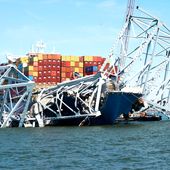HANOI (AP) — With global trade talks still on ice, Pacific Rim leaders are taking a closer look at Plan B: a Pacific-wide free-trade zone that would encompass half of world trade.
Leaders and business executives attending this weekend’s Asia-Pacific Economic Cooperation (APEC) forum were united in calling for the resumption of World Trade Organization talks that collapsed in July amid disputes over farm trade.
But there also was plenty of discussion about an alternative should the WTO’s Doha, Qatar, round talks never get back off the ground.
A sprawling APEC-wide free-trade area, stretching from the U.S. to Russia and from Chile to Australia, would cover 40 percent of the world’s population and 56 percent of its gross domestic product.
Proponents of the idea, including the United States, New Zealand and a business council that advises APEC, argue that it would standardize the plethora of bilateral free-trade deals in the region and act as a backup in case WTO negotiations never resume.
“The key game has to be WTO,” said Prime Minister Helen Clark of New Zealand. “But if Doha stumbles so badly that it went into suspension for years, then, of course, an agreement which covers countries around about 60 percent of the world economy is very attractive for us.”
The United States, once lukewarm to the idea — proposed by APEC’s business council two years ago — has become a strong supporter. President Bush urged Asian leaders in a speech in Singapore on Thursday to give serious consideration to setting up a Free Trade Area of the Asia-Pacific, or FTAAP.
Timothy Ong, chairman of the Brunei Economic Development Board, said the proposal is a rational response to rein in the “complete chaos” caused by bilateral and subregional free-trade agreements that have ballooned from three in 1998 to 21, with at least an additional 20 being negotiated.
But forging a trade treaty among the group’s 21 members would radically change the nonbinding nature of APEC, which was formed in 1989 as a consultative forum to promote trade and investment.
That has several members of the group — including China, Thailand, Indonesia and the Philippines — resisting the idea. Other nations such as Japan want to focus instead on East Asian integration.
“An FTAAP at this point will only distract us from the more important goal of restarting and concluding the [Doha Development Agenda] negotiations,” said Philippine Trade Secretary Peter B. Favila.
By the end of the summit, APEC leaders acknowledged “practical difficulties” in building such a zone and asked their officials to study the idea as a long-term prospect and report back to them at next year’s summit in Sydney, Australia.
By that time, the fate of the Doha round likely will be much clearer.
WTO members widely agree that they need to conclude a trade deal by early next year before Mr. Bush’s authority to negotiate an agreement with a simple yes-or-no vote in Congress without amendments expires July 1.
“We can begin to think about it, but it’s not necessary to enter into negotiations at the moment,” Malaysian Prime Minister Abdullah Ahmad Badawi said. “I think it’s better that our economic officials concentrate on getting the Doha Development Round moving.”



Please read our comment policy before commenting.